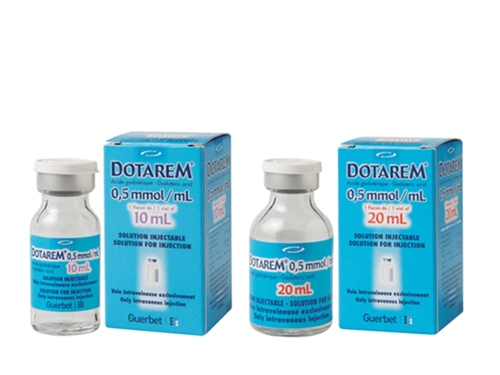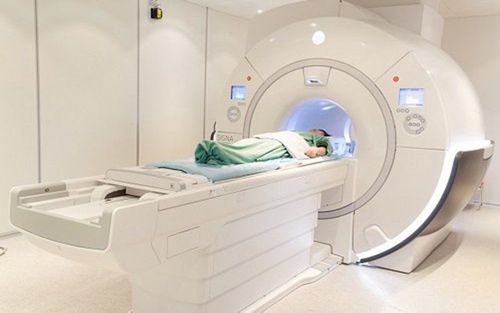This is an automatically translated article.
The article is professionally consulted by - Master, Resident, Specialist I Trinh Le Hong Minh - Department of Diagnostic Imaging - Vinmec Central Park International General Hospital.
Magnetic resonance imaging (MRI) is a diagnostic method that combines a large magnet, radio frequency, and a computer to create detailed images of organs in the body, including the brain and spinal cord. living. To promote the effect of MRI, what should be noted when taking MRI of the brain and spinal cord?
1. Brain MRI scan
Magnetic resonance imaging (MRI) of the brain is an imaging method based on the mechanism of action of magnetic fields. MRI is particularly effective in diagnosing injuries involving the brain and spinal cord, including:
Cerebral aneurysm Multiple Sclerosis Hydrocephalus Stroke Brain Infection Brain Tumor Brain Hemorrhage Disorder Hormonal disturbances lead to certain diseases such as Cushing's syndrome. Cranial magnetic resonance imaging can also help identify brain damage caused by a traumatic brain injury or stroke. In some cases, an MRI can provide clear images of parts of the brain that cannot be seen with X-rays, CT scans, or ultrasounds. MRI scans are especially valuable for diagnosing problems with the pituitary gland and brain stem.
In addition, doctors may also order MRI of the brain to assist in the diagnosis of some of the following symptoms:
Fatigue, dizziness, dizziness Convulsions Cognitive or behavioral disorders Menstrual headaches year.

Chụp MRI giúp chẩn đoán các cơn đau đầu kéo dài
All of the above symptoms can be caused by brain problems and MRI can help diagnose the exact cause.
Another type of magnetic resonance imaging that involves the brain is functional magnetic resonance imaging (fMRI). This technique is very useful for people who have undergone brain surgery. Functional magnetic resonance imaging can pinpoint areas of the brain responsible for language and speech formation, as well as body movement, by measuring metabolic changes that take place in the brain during illness. The patient performs certain tests that the doctor assigns, such as answering short questions or performing hand and finger movements. In addition, magnetic resonance angiography (MRA) can help evaluate blood vessels in the brain so that it can early detect bleeding or hematoma, aneurysms...
2. MRI scan of spinal cord
Similar to the brain, magnetic resonance imaging of the spinal cord is also an effective method to evaluate the condition of the spinal cord. The doctor will prescribe this technique if the patient shows some of the following symptoms:
Back pain accompanied by fever with no known cause Birth defects related to the vertebrae Spinal trauma Traction back pain Prolonged and worsening multiple sclerosis Occurrence of bladder problems Detect signs of brain or spinal tumors Numbness, weakness, and mobility limitations In addition, MRI The spinal cord also helps in determining the correct position before performing spinal surgery.
Magnetic resonance imaging of the spinal cord provides clearer images of the nerves between the vertebrae than other tests such as ultrasound, X-ray or computed tomography.
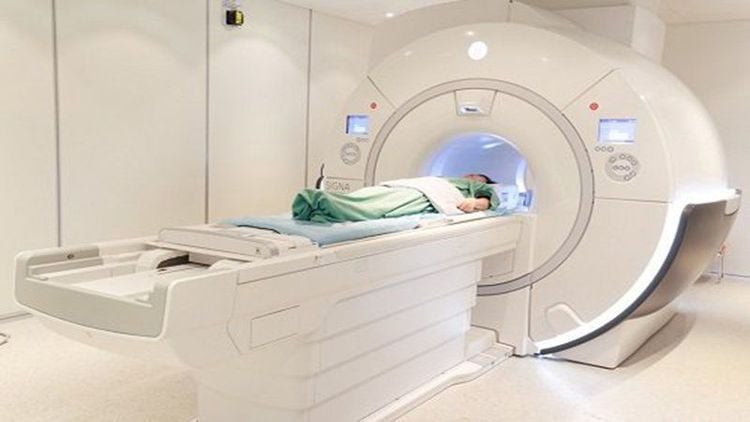
Chụp MRI tủy sống cho phép chẩn đoán hình ảnh rõ ràng
The point that makes spinal cord MRI highly appreciated is that this technique does not use ionizing radiation like X-rays or computed tomography, so it is considered safe for the body, especially with pregnant women and children. However, that does not mean that magnetic resonance imaging of the spinal cord does not have disadvantages, such as:
Magnetic waves generated by the magnets in the MRI of the spinal cord interact with other types of needle-assisted machines. types that are attached to the patient's body such as pacemakers, hearing aids, insulin pumps, artificial joints, IUDs... make them malfunction or even lead to damage. Another complication of spinal MRI that should also be considered is an allergic reaction to the contrast agent. In some cases, a contrast medicine is injected into the bloodstream through a vein to get a clearer picture. The body's response to these drugs is usually mild and easily controlled. However, in many cases, patients can develop anaphylactic shock even leading to death.
3. Full body MRI
Whole body magnetic resonance imaging is an imaging technique from MRI on the whole body, performed on many planes to obtain the clearest 3D images. This method allows assessing the condition of many areas of the body, diagnosing many different diseases in one scan.
Many diseases can affect the whole body such as infections, metabolic diseases and especially cancer. Therefore, instead of testing each part of the body, a full-body MRI scan helps to evaluate the entire condition of the body with just one scan, saving time and money for the patient
When to take a scan Whole body MRI?
All cases are diagnosed with cancer, need whole-body MRI to determine the metastasis of the tumor to classify the extent of the disease Assess the tumor status after treatment with radiation, chemotherapy or surgery These cases of infection of unknown cause Some cases of lesions have a systemic spread such as inflammation, metabolic diseases Screen for cancer before the appearance of obvious physical manifestations.
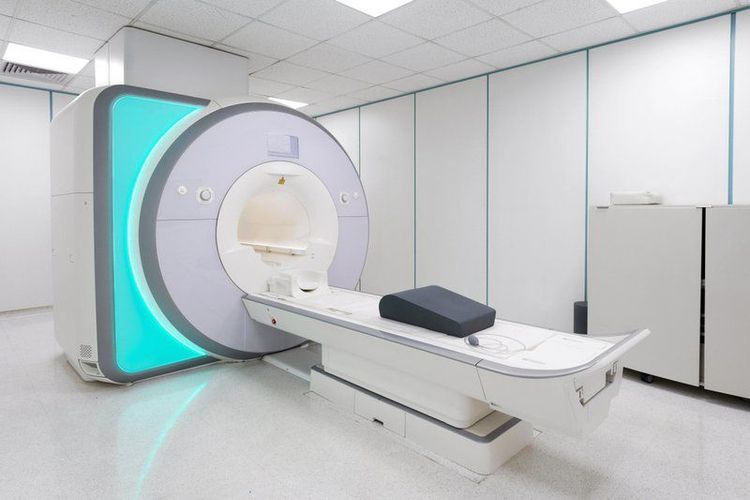
Hình ảnh máy chụp cộng hưởng từ 3.0 Tesla tại Vinmec
4. Brain MRI for children
The brain is one of the most important and vulnerable organs of the body, especially for children when the skull bone system is not yet complete to perform the protective function of the brain. An MRI scan can detect a variety of brain conditions such as cysts, tumors, bleeding, edema, developmental and structural abnormalities, infections, inflammation, or problems with blood vessels. .
Children's brain magnetic resonance imaging is a safe, non-invasive technique that helps detect a wide range of brain conditions such as tumors, hemorrhages, cerebral hematomas, encephalitis or developmental abnormalities. structure of the young brain.
Brain MRI for children is useful in evaluating conditions: persistent headache, dizziness, fatigue, inactivity, seizures or some congenital brain diseases. An MRI can provide clearer pictures of certain areas of a baby's brain than an X-ray or an ultrasound.
What to prepare for brain magnetic resonance imaging for children?
Usually brain MRI does not require any special preparation. The technician will ask the child to remove metal objects on the body as it may affect the image quality. The technician will also take a history related to the presence of certain metal devices in the child's body. If so, the child may be ordered to have other tests.
To get the highest quality MRI results, your child will need to stay still during the scan. For newborns or hyperactive babies, the nurse may inject a sedative intravenously to keep them asleep during the MRI.
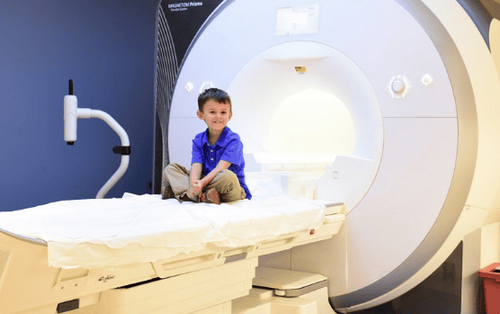
Chụp MRI não cho trẻ em là kỹ thuật an toàn, giúp chẩn đoán các triệu chứng đau nhức đầu kéo dài, chóng mặt
At some hospitals or clinics, the child's parents can stay in the room with their child, but most will be asked to wait outside or can watch the baby through a monitor in the technician's control room. technician.
Brain MRI for children usually takes about 30-45 minutes. After the end of the scan, the child will be taken off the bed by the technician or moved to the recovery area in the case of sedation.
Magnetic resonance imaging is a safe, non-invasive imaging method that does not use harmful ionizing radiation. MRI brings a lot of efficiency in diagnosis and treatment plan, especially in identifying brain and spine lesions. In addition, magnetic resonance imaging also aids in the screening of malignancies, especially cancer, before the tumors metastasize and show physical symptoms.
Vinmec International General Hospital is the first unit to put into use a 3.0 Tesla magnetic resonance imaging machine with Silent technology (noise reduction), bringing outstanding advantages. Magnetic resonance imaging (MRI) at Vinmec will have the following outstanding advantages:
High imaging technology, first-class safety by accuracy, non-invasiveness and no radiation. High image quality, allowing doctors to comprehensively evaluate, not miss even the smallest lesions in organs Minimize noise, create the most comfort for patients when taking pictures, reduce stress, this helps better image quality and shortens the maximum scanning time. MRI with Silent technology is especially suitable for the elderly and children, people with weak health, and patients undergoing surgery. .. MRI scan at Vinmec can take 3-D vascular reconstruction without contrast injection, can reconstruct and handle the patient's motion artifacts
Before taking a job at National General Hospital Medical Center Vinmec Central Park, the position of Doctor of Imaging Department since February 2018, Doctor Trinh Le Hong Minh used to work as a resident in the Department of Radiology at hospitals: Cho Ray, University of Medicine and Pharmacy, Oncology, Gia Dinh People, Trung Vuong...from 2012-2015. Officially working at Cho Ray Hospital from 2015-2016, City International Hospital since 2016.
To register for examination and treatment at Vinmec International General Hospital, customers can call the Hotline at: hospital or register online HERE.
Source: healthline.com & mayoclinic.com







